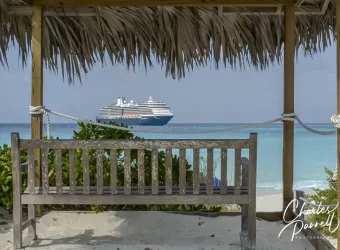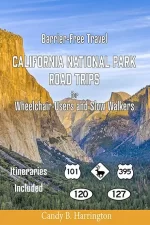Wheelchair-Accessible Cruise Tips
Cruises are an excellent choice for an accessible vacation, as most of the newer cruise ships have good wheelchair access. Additionally, you can visit many ports on a cruise, but you only have to unpack once. And cruises are also a great multigenerational vacation choice. With that in mind, here are a few helpful tips to help you plan a wheelchair-accessible cruise.
Planning Your Wheelchair-Accessible Cruise
- Contact the cruise line’s Special Needs Department for detailed access information or special access requests.
- Remember to request pier assistance when you book your cruise. Disabled passengers are given priority boarding upon advance request.
- Most ships have wheelchairs that can be borrowed for embarkation. If however , you need one full-time or ashore, you need to bring your own or arrange for a rental to be delivered to your cabin. Contact the cruise line for a list of their approved vendors.
- Outside vendors can also provide Hoyer lifts and other medical equipment; but make user you order these from an approved vendor.
- Some cruise lines can also provide special equipment, such as commode chairs or shower chairs, upon advance request.
- Don’t assume all accessible cabins are the same. If you need a specific feature, such as a roll-in shower, ask if it’s available.
- The best advice comes from people who have recently cruised, so check out the “Disabled Cruiser” section of the Cruise Critic website (cruisecritic.com). It’s an excellent place to gather information about accessible shore excursions that you can book on your own.
- Plan ahead! Accessible cabins are in short supply so try to book at least 6-9 months in advance to get your first choice of sailing dates. Accessible balcony cabins on Alaska cruises go like hotcakes, so book those as soon as they become available.
Things to Remember
- Slow walkers who use scooters and don’t have the need for an accessible cabin need to make sure that standard cabin doorways are wide enough to accommodate their equipment. Most cruise lines don’t allow scooters to be parked in hallways.
- If you use a power wheelchair or scooter, make sure the electrical supply on the ship is compatible with your battery charger. It’s also a good idea to pack an extension cord and a power strip, as electric outlets are limited. If you do this, make sure to clear it with the special needs department, as these are usually prohibited on board.
- If you use a scooter or a wheelchair, request a table near the door in the dining room. There’s very little space between the tables, and the closer to the entrance you are, the easier it will be navigate.
- Become familiar with the tendering procedures of your preferred cruise line. Some cruise lines hand-carry wheelchair-users aboard tenders, some use mechanical devices and some do not permit power wheelchair-users to tender at all.
- It’s also important to recognize that any port has the potential to become a tender port, due to port traffic and conditions.
- Ask a lot of questions about ship sponsored shore excursions. In some cases you have to be able to climb up the steps of a tour bus in order to participate. Do your research and plan your own accessible shore excursions if possible.
- It’s also important to plan your shore excursion as far in advance as possible. In some ports they are very limited, and they are usually not available for last minute bookings.
Once Aboard
- If you’d like to use the pool, make sure the lift is in working order on the first day. If it’s not, then report it, so the crew will have plenty of time to recharge or repair it.
- If you take along a manual wheelchair, mark it clearly with your name or personalize it in some way, so it won’t be mistaken for one of the ship’s wheelchairs.
- Take a tour of the ship on the first day and locate the accessible restrooms on each deck. Make note of the locations for future use.
- Last but not least, if you use a power wheelchair or scooter, consider bringing along a manual wheelchair for use in port. This is especially helpful in Caribbean ports, where it’s difficult to find lift-equipped transportation.


